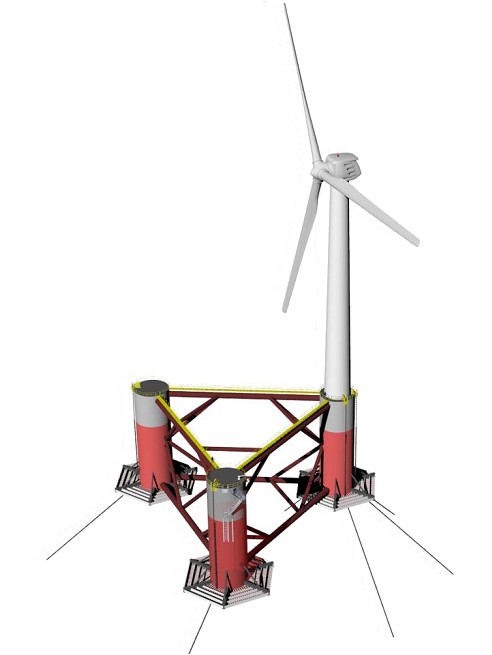Floating wind turbines could capture the energy of higher wind speeds further out to sea and address some of the noise and unsightliness complained about by those with turbines closer to home.
Wind turbines represent one of the most reliable renewable energy solutions, along with solar power and tidal and hydroelectric power. As wind turbine designs increase their size they also get noisier and become more of an eyesore. The solution is either to site them remotely on dry land or to build them at sea with the tower embedded in the seabed of shallow waters, but this restricts them to near-shore waters with depths no greater than 50 metres, which means they cannot utilise the strong winds further out to sea.
Now, naval architect Dominique Roddier of Berkeley, California-based Marine Innovation & Technology has, together with his team, published a feasibility study of a novel platform design – WindFloat – that, as the name suggests uses floating wind turbines. The study is published in the Journal of Renewable and Sustainable Energy this month.

Roddier and colleagues, Christian Cermelli, Alexia Aubault, and Alla Weinstein, have tested a 1:65 scale model in a wave tank, which shows that a three-legged floating platform, based on existing gas and oil offshore platform designs. The team explains the main issue: “A floater supporting a large payload (wind turbine and nacelle) with large aerodynamic loads high above the water surface challenges basic naval architecture principles due to the raised centre of gravity and large overturning moment,” they say. In other words at first glance such a rig would capsize very easily. However, after several years work, their results show that the current design is stable enough to support a 5-megawatt wind turbine, the largest turbine that currently exists. These mammoth turbines are 70 metres tall and have rotors the size of a football field. Just one, Roddier says, produces enough energy “to support a small town.”
The next step is to continue construction of a prototype with electricity operator Energias de Portugal that will help the developers understand the life-cycle cost of such projects and to refine the economic model. The prototype will be tested in open water by the end of summer 2012, Roddier says. “The WindFloat [design] is envisioned to be located 15-20 km offshore so as to minimize risks/nuisance to the general public, and to mitigate the view impact from the coastline,” the team adds.
Links
J Renewable Sustainable Energy, 2010, 2, 3, 033104
Marine Innovation & Technology